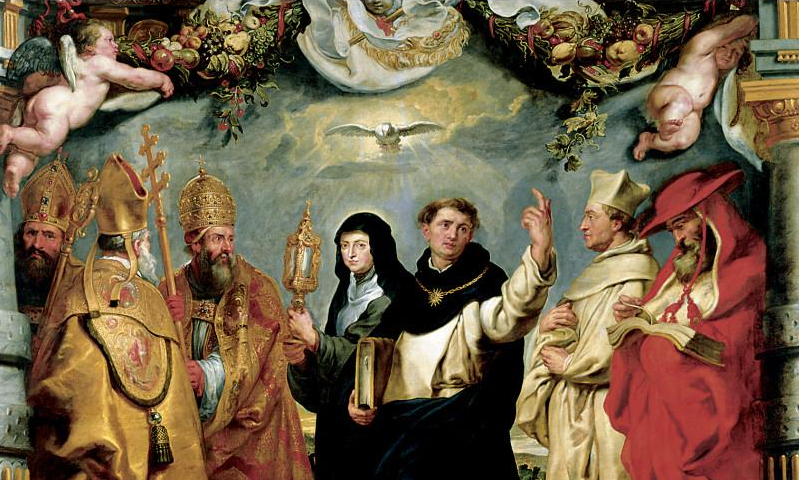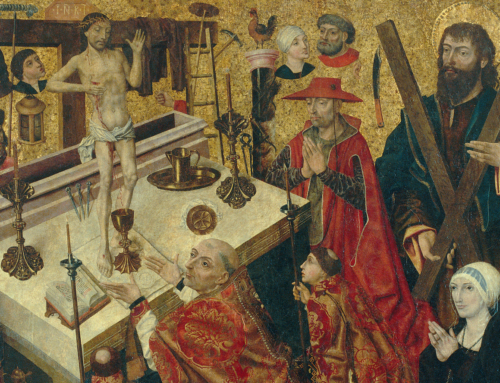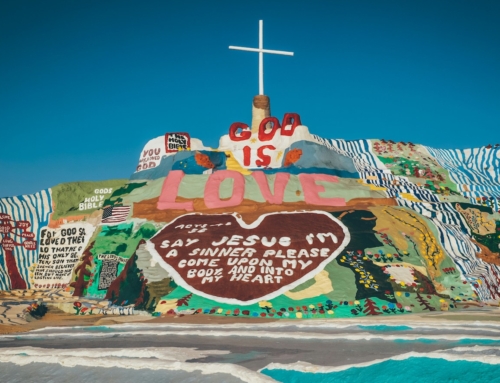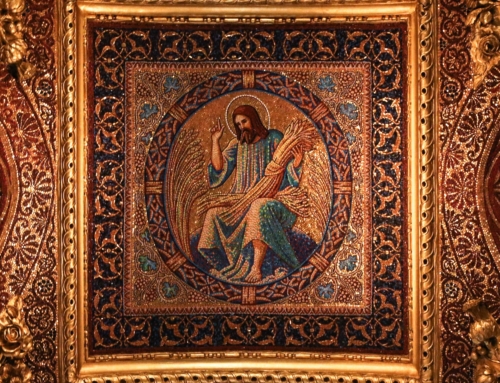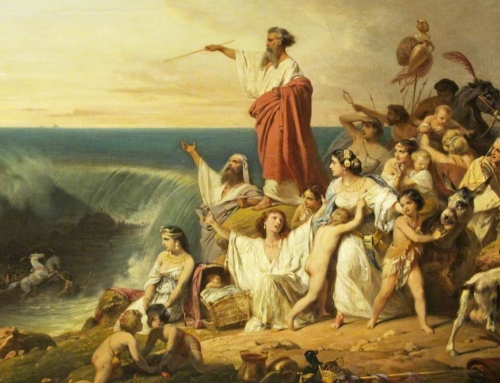Seven saints march in procession together, gathered from disparate centuries to honor their Lord in the Eucharist. Each one displayed fervor for the Eucharist in his or her own time and spread that devotion to others. It was Peter Paul Rubens who assembled these saints in this painting called “The Defenders of the Eucharist.” Soon, the silent footsteps shown here will be imitated by the faithful in cities around the world, when we gather for Corpus Christi processions.
Today, June 6, is the feast day of St. Norbert of Xanten, shown in the white habit of a cathedral canon. He is perhaps the least known of the seven saints here, four of whom are the great Fathers of the Latin Church: St. Augustine, St. Ambrose, St. Gregory, and St. Jerome. They are depicted in this order from left to right, with Augustine leading and Jerome bringing up the rear. In the center St. Clare holds the monstrance, and next to her St. Thomas Aquinas points towards Heaven, holding a tome representing his theology.
What did St. Norbert do to earn a place among these others? He did not leave writings like the five doctors of the Church, nor perform a miracle as glorious as St. Clare’s repulsion of invading Saracens with a monstrance. But he did defend the truth of the Eucharist when a heresy arose in Belgium in the early 12th century. The town of Antwerp was persuaded by the would-be reformer Tanchelm that the sacraments were not real, a belief that persisted after his death. By his preaching, St. Norbert converted the whole town back to faith in the real presence of Christ in the Eucharist. Later, this truth would again be denied in the Protestant Reformation. This is part of the reason that St. Norbert was only canonized in 1582, so long after he died in 1134. He was held up as a model of faith to the wider Church, an “Apostle of the Eucharist.” Peter Paul Rubens included him in this painting in the 1620s, when Isabella Clara Eugenia, sovereign of the Spanish Netherlands, commissioned a whole series of paintings celebrating the Eucharist.
St. Norbert’s connection to the Eucharist goes beyond his preaching against Tanchelm, however. When he was a traveling preacher at the beginning of his career, he carried with him hardly any possessions outside of what was needed to celebrate Mass. Sometimes he would celebrate more than one Mass in a day, and several of his miracles were accomplished in connection with the Mass. He was so devoted to the Precious Blood that when a poisonous spider fell in the chalice, he drank it rather than risk spilling any. The saint thought he would die, but a little later the spider came harmlessly out of his nose. He also healed a blind woman by breathing on her after consuming the Eucharist and drove out a recalcitrant demon from a young girl by having her present as he celebrated Mass.
When we celebrate Corpus Christi this year, then, we can think of the Defenders of the Eucharist and especially St. Norbert. We walk in the footsteps of those whose faith came before us, those whose faith makes it possible for us to believe today. Through this faith we recognize and adore Jesus in the Sacrament of Sacraments, in which His eternal glory is present to us in time. Before the Ascension He promised that He would be with us always (Mt 28:20), but without faith we would not see Him with us. Let us rejoice that we do see Him, and pray that by this sacrament we may join the saints in the glory of Heaven.
✠
Image: Peter Paul Rubens, The Defenders of the Eucharist

